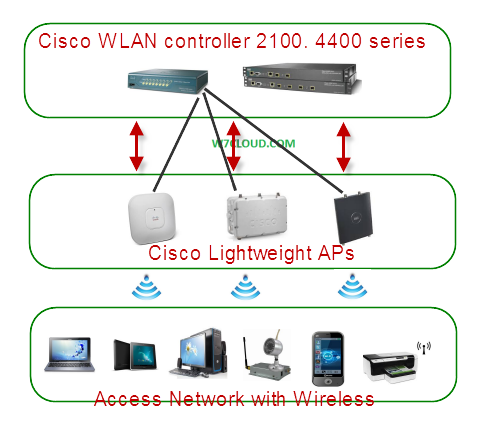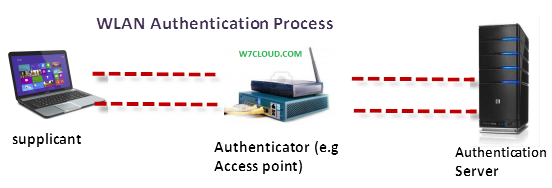
IPv6 types of Addresses
Following are the most common types of the IPv6 addresses:
- IPv6 Unicast
- IPv6 Anycast
- IPv6 Multicast
The leading bits of an IPv6 address can define the IPv6 address type, following are the starting Hexadecimal/Prefix of common IPV6 types:
| Starting Bits | IPv6 address type or allocation |
| 0000::/8 | Unspecified, loopback, IPv4-compatible |
| 2000::/3 | Global Unicast address |
| 8000::/3 | Reserved for geographic-based Unicast addresses |
| FC00::/7 | Unique Local Unicast |
| FE80:/10 | Link-local Unicast addresses |
| FF00::/8 | Multicast addresses |
IPv6 unicast address:
IPv6 unicast address is one to one address or logical identifier of single host’s interface and this is similar to IPv4 unicast address or classfull address like class A, B and C. In IPv6 we have following two types of unicast addresses:
-
IPv6 Global Address:
IPv6 Global unicast addresses connects us to Public network/WAN, these address are unique and routable over the internet. Figure shows the format of the standard IPv6 global unicast address. The global routing prefix is generally 48 bits in length, and the subnet ID is 16 bits. The interface ID is 64 bits in length and uniquely identifies the interface on the link.
The interface ID is obtained from the 48-bit MAC address of the host. The MAC is converted to the EUI-64 identifier format by inserting the FFFE hexadecimal value in between the 24-bit left and rightmost values. For example, with the following MAC address 01:00:0C:A4:BC:D0. The leftmost 24 bits are 01:00:0C and the rightmost bits are 01:00:0C. By inserting FFFE the IPv6 64bit identifier becomes:
01:00:0C:FF:FE:A4:BC:D0.
-
IPv6 Link-local address:
Link local address is significant only to individual nodes on single link, router don’t forward the packet with link-local address beyond the local link or sub-network. Link-local address always start with FE8, these address can be configured automatically or manually.
IPv6 anycast address:
Anycast address is called one to nearest and it identifies the set of devices. In IPv6 anycast address you can allocate the unicast addresses to set of device. Suppose you have set of servers in USA and in Australia, users in USA are routed to USA servers and Australian users to their servers. When a packet is sent to the anycast address, it is delivered to the nearest device as determined by the routing protocol.
IPv6 Multicast address
Multicast addresses in IPv6 are used for send data from one to many nodes with identifying the set of host. IPv6 packets are delivers to group of multicast devices. IPv6 multicast addresses are similar to IPv4 class D multicast addresses. With IPv6 multicast addresses you can send the packets to all-nodes like in IPv4 you broadcast, all-nodes have the broadcast functionality but in IPv6 we will use the term all-nodes instead of broadcast.
All modes multicast address: FF01:0:0:0:0:0:0:1
All router multicast address: FF01:0:0:0:0:0:0:2
IPv6 multicast address is begins with FF::/8. The format of IPv6 address are shown as above you can see that the fields of the IPv6 multicast address are the FP, a value of 0xFF, followed by a 4-bit flags field, a 4-bit scope field, and 112 bits for the group identifier (ID). The FLGS (flags) bits consist of three leading zeros followed by a T bit: 000T. If T = 0, the address is a well-known multicast address assigned by the global IANA. If T = 1, the address is not a permanently assigned address. The SCOP (scope) field limits the scope of the multicast group. It may global, link local or Node-local scope.
Loopback address in IPv6:
In IPv4 we have the loopback address of 127.0.0.1 where as in IPv6 we have 0:0:0:0:0:0:0:0:1 as loopback address.
















